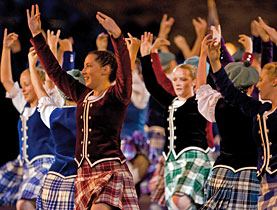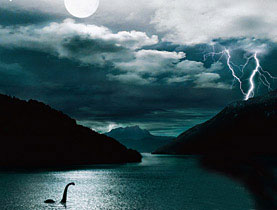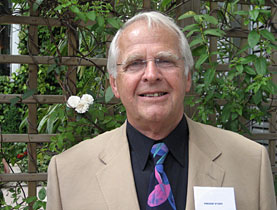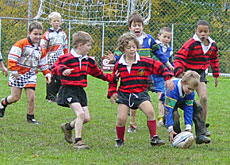Basel’s tattoo spins to success

The city of Basel is set to reverberate with the sound of military pipes and drums, steel bands and bagpipers as its annual tattoo gets underway.
The Basel Tattoo has become an enormous success since its inception three years ago, and is now the second largest in terms of performers and budget after the famous Edinburgh Military Tattoo.
The five-day event starts on Tuesday evening. Highlights this year will include an army band from South Korea, a steel band from Trinidad and Tobago, and highland dancers from South Africa.
“It’s fantastic how this has grown up in three years. We had 60,000 tickets sold out in seven weeks,” tattoo producer Erik Julliard told swissinfo at the sidelines of a media conference.
“There are 1,000 performers from all over the world from four different continents and 23 formations representing more than 12 nations.”
The annual Massed Pipes and Drums, a formation of more than 200 people from ten countries, is another big draw.
The Basel Tattoo, which attracted 38,000 people when it started in 2006, is the only one to take place where the tattoo originated – in the courtyard of a military barracks, organisers say.
It has been closely modelled on the Edinburgh event, with the Basel team receiving help and advice from Scotland.
Why Basel?
Julliard said that the tattoo idea originated around the Top Secret Drum Corps, a Basel-based military band which has performed several times in Edinburgh.
Such was the enthusiasm for the genre of music in Basel that it was decided to give it a professional platform.
“You should see the crowd response to the Pipes and Drums. Basel is a big fan of festivals like this,” said Julliard.
For Hanspeter Gass, a Basel city councillor, pipe music is in Baslers’ blood. People already enjoy drumming and marching, which are key parts of the spring festival of Fasnacht.
“In addition to the tattoo in the arena, there is also a parade through the city. Last year half the city was there watching,” Gass said, adding that a parade would also be happening this year.
Gass is proud that the tattoo is being held in Basel. “After Baselworld, the international watch and jewellery fair, the Art Basel art fair, and being one of the host cities for the Euro 2008 football championships, we now have the Basel Tattoo – four highlights one after the other which make Basel known in the world,” he told swissinfo.
Home and away
Those taking part seem to be equally as enthusiastic. Carol Jones, leader of the South African Highland Dancers, said her troupe, who come from all over the country, were very excited.
“It’s really a highlight for a dancer to show what they can really do. Highland dancing is not that well known, and we don’t really get opportunities to show off very much,” she explained.
Many of her group, aged 15-33, have Scottish roots. But some, like Jones herself, were simply inspired to join. “It gets into your system and then you just keep on dancing,” said Jones.
The Swiss are also represented, with a group from the Swiss army – the defence ministry is now the tattoo’s patron – as well as the upcoming Swiss Showband.
A Scottish twist is also in evidence – the tattoo now has its own tartan. Approved by experts, the pattern includes Basel and Swiss colours as well as blue for the flag of Scotland.
Julliard expects the tattoo to build on its previous success – and has clear hopes for this year.
“No accidents, no rain. Lots of standing ovations that will hopefully bring the house down”.
swissinfo, Isobel Leybold-Johnson in Basel
The tattoo takes place in the city’s military barracks from July 15-19.
The budget is SFr5.2 million ($5.16 million) and the event is expected to generate around SFr10 million.
The arena has a capacity of 7,575.
The parade through Basel will take place on July 19 at 1400.
According to Julliard, the name celebrates the return of military units from a night out.
In the 16th century, there was a piper or trumpet player on the hill who gave the signal to come back to the barracks.
The phrase that was used came from the Netherlands – Doe den tap toe – meaning close the taps. This was transformed into tattoo.

In compliance with the JTI standards
More: SWI swissinfo.ch certified by the Journalism Trust Initiative




You can find an overview of ongoing debates with our journalists here. Please join us!
If you want to start a conversation about a topic raised in this article or want to report factual errors, email us at english@swissinfo.ch.